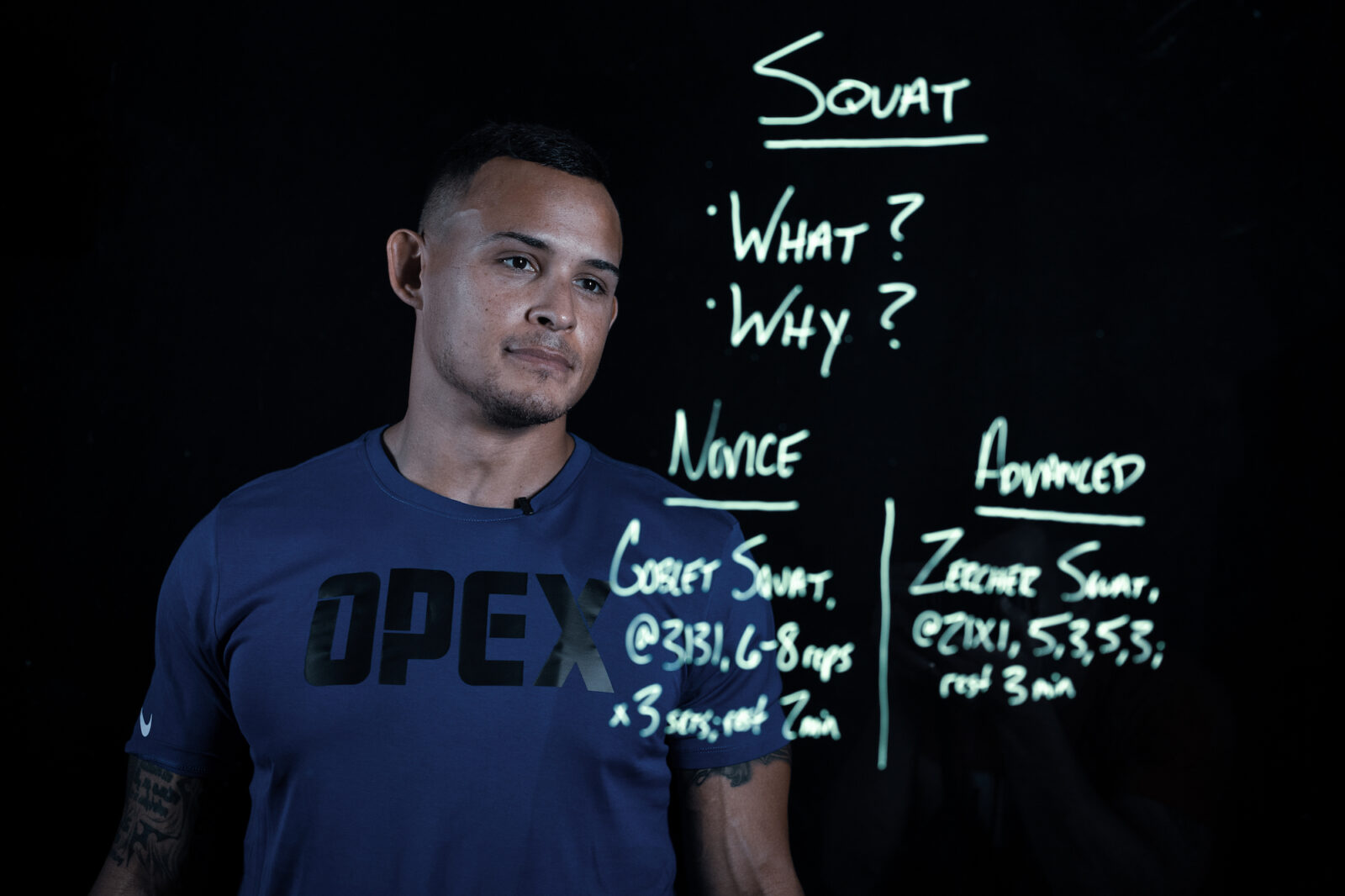Coaches Corner With Carl Hardwick: Overcoming Program Design Mistakes

Here are four common program design mistakes coaches make, so you don’t have to make them yourself
As a coach, you know that creating effective programs will help your clients reach their fitness goals. However, it’s essential to recognize the significance of your client’s capabilities and your intention behind the training program. In this article, I will discuss a systematic approach to understanding your client’s capabilities and intentions, enabling you to create tailored exercise programs that maximize results.
Program design mistakes
Program design mistakes can hinder progress and undermine the effectiveness of your client’s success. Let’s explore some common mistakes and discuss how to overcome them.
Mistake 1: lacking competence
One of the most prevalent mistakes is a lack of competence in program design. As a coach, it’s crucial to have the knowledge and skills necessary to choose exercises that align with your client’s goals. Avoid the trap of randomly selecting exercises or copying what other coaches are doing. Instead, take the time to understand your client’s unique capabilities and create exercise programs that address their goals effectively.
To overcome this mistake, invest in your education. I know I’m biased here, but this is why we created OPEX CCP—to give coaches the knowledge they need to have the competence to deliver results for their clients. Also, beyond education, expand your knowledge base and seek mentorship from experienced coaches who have been there.
Mistake 2: not enough experience
In the early stages of your coaching career, it’s common to lack sufficient experience to make confident program design choices. This can lead to errors such as choosing exercises that are beyond your client’s capabilities or misprescribing volume and intensity.
To overcome this mistake, focus on simplicity. Start with foundational movement patterns and exercises that you’re familiar with and have mastered. Gradually expand your toolbox as you gain experience and confidence. Remember, simplicity can be incredibly effective, especially for clients who are new to fitness or have specific limitations.
Mistake 3: over-programming
Over-programming is another mistake that can compromise the effectiveness of a training program. Coaches often try to include too many exercises in a program, resulting in excessive volume and inadequate recovery time for the client. This can lead to fatigue, compromised performance and increased risk of injury.
To avoid over-programming, prioritize quality over quantity. Select exercises that target the specific goals and needs of your clients rather than overwhelming them with a large number of exercises and spending two hours in the gym. Focus on consistency and recovery, allowing clients to adapt and progress effectively.
Mistake 4: no system
A significant mistake in program design is not having a clear system in place. Without a systematic approach, coaches may rely on guesswork or trial and error, leading to ineffective and unsafe program design.
To overcome this mistake, develop a structured system that considers your client’s goals, capabilities and limitations. Create guidelines and criteria for exercise selection, incorporating scientific principles and evidence-based practices. A systematic approach provides consistency, clarity, and confidence in your exercise selection process. In CCP, we simplify this process for our coaches by systematizing into the following stages:
- Consult
- Assess
- Design

Creating effective exercise programs
Now that we’ve discussed the common program design mistakes, let’s delve into creating effective exercise programs by focusing on client capabilities and intentions.
Aligning with client intentions
Engage in open and honest communication to determine what your clients want to achieve, their preferences and their motivations. Understanding their intentions will allow you to tailor exercise selections that align with their specific goals.
Understanding client capabilities
Start by assessing your client’s capabilities through an assessment process. Consider factors such as their movement quality, work capacity and understanding any limitations (physical or psychological) they might have. This assessment will guide you in identifying their current fitness level and capabilities.
Personalizing program design
With client capabilities and intentions in mind, personalize the program design that challenges and supports your client’s progress. Consider factors such as exercise variations, reps/sets, tempo and rest that align with their goals, capabilities and the intention of the program.
Monitoring and adjusting
Continuously monitor your client’s progress and make necessary adjustments to the program design. Regularly reassess their capabilities and goals to ensure that the program remains aligned with their evolving needs. Incorporate feedback and listen attentively to their experiences to refine and optimize the program design process.
Keep learning, growing and refining your program design process, and watch your clients thrive.
See Carl’s previous column here.
Next week’s column: AI, Threat or Opportunity?
Carl Hardwick, CEO of OPEX Fitness & CoachRx, is a strong advocate for bringing honor to the coaching profession and raising the value of all fitness coaches. He lectures frequently about program design, business systems, and building a sustainable coaching career. Follow him on Instagram @hardwickcarl and OPEX Fitness on YouTube



